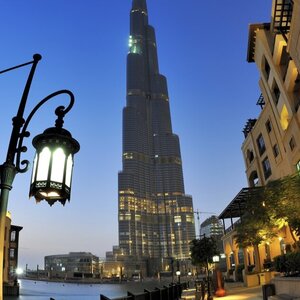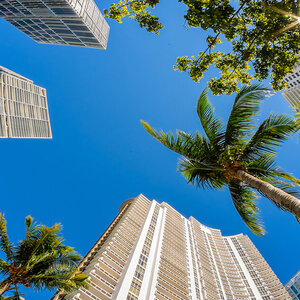The WPJ
THE WORLD PROPERTY JOURNALReal Estate Facts Not Fiction
Featured Columnists

South of the Border, Down Yucatan Way
» Featured Columnists | By Steve Winston | November 14, 2012 9:20 AM ET
In Mexico's Yucatan Peninsula - also known as the Riviera Maya, for its Mayan heritage - the atmosphere's as calm as the waters. The beaches are pristine. The hotels are wonderful. The restaurants are authentic. And the ancient symbols of a grand civilization are as imposing as ever.
Â
A company called Adventure Life can show you the Yucatan beyond the brochures, the one that has its roots in the great cities and shrines of a thousand years ago. You'll experience the real Yucatan, with visits to Mayan sites such as Chichen Itza, Tulum, Coba, and Uxmal, and the Colonial cities of Campeche and Merida.
Â
You start in the Colonial city of Campeche, whose well-preserved buildings and walled city center are well worth exploring. Campeche is a UNESCO World Heritage site, with cobblestone streets, colorful pastel buildings, and fortress walls erected by the Spanish to protect the city from pirates. And its essence may be best captured by a sunset stroll along the waterfront promenade called the malecon.
Â
Outside the city is a Maya archaeological site called Edzna, with a temple built on a platform over 120 feet high, Called Edificio de los Cinco Pisos (Five-Story Building), it provides a great view of the places below where the ancients gathered, as well as the surrounding countryside.
Â
Two hours north of Campeche are the ruins of Uxmal. These impressive structures are considered to be among the finest examples of Mayan architecture, with intricate cornices, mosaic tiles, and graphic Mayan symbols. At night, a sound-and-light show brings the mystery of this place alive.
Â
You'll also visit the Hacienda Sotuta de Peon, a working plantation dating back to the late-1800's, which used to produce fibers for rope and paper. The main house and the grounds are evidence that the rope and fiber businesses were pretty profitable! And the lucky owners of the property probably swam - as you will - in the cenote, a limestone sinkhole with important religious significance for the Maya.
Â
The city of Izamal is called "The Yellow City," and it's not hard t see why; that's the color of many of the buildings. This was a center of worship of the Maya sun god, Itzamna, and now the site of an old Spanish monastery. During the conquest, the Spanish purposely built their monastery atop the Maya temple.
Â
The most famous of the Mayan ruins is Chichen Itza, anchored by an iconic temple called El Castillo (Pyramid of Kukulcan), which dominates the view as you enter. The great ball court (where the losers sometimes lost more than just a game!), plazas, observatory, and temples still seem to echo to the sounds of the people who once filled them.
Â
Nearby are the ruins of Coba, which means "water stirred by wind" in Mayan. And at the Tulum ruins, you'll stand atop a rocky cliff and look down on the white beach and turquoise water. Tulum is Maya for "wall," referring to the fortress walls that resisted attacks from other Maya city-states as well as the Spanish.
Â
Nearby is the impressive Sian Ka'an Biosphere Reserve, where you'll travel by boat through the mangroves and estuaries of a complex eco-system. As you glide along, you may see howler monkeys, pumas, ocelots, osprey, jaguars, flamingos, cormorants, frigate birds and spoonbills.
Â
The Yucatan is the home of a Lost Civilization. However, though the civilization may be gone, the archaeological treasures they left us will stand forever. They'll stand as eternal reminders of a history which was tumultuous...and of a present which is serene.
Sign Up Free | The WPJ Weekly Newsletter
Relevant real estate news.
Actionable market intelligence.
Right to your inbox every week.
Real Estate Listings Showcase
Related News Stories
Featured Columnists Real Estate Headlines
- NAR Predicts Falling Rates, More Sales by Year End 2024
- Low Income Americans Not Thriving in Today's Economy
- How to Plan a Trip for Solar Eclipse
- Why Are So Many Consumers Out of the Loop About Agent Commissions?
- BETTER MLS: The Birth of Something New for America's Property Industry
- My Top 3 July Fourth Vacation Getaways in America Revealed for 2022
- Top 5 Christmas Getaways in America Revealed
- My Top 4 Thanksgiving Getaways in North America Revealed
- My Top 4 Labor Day Getaways of 2021 Revealed
- The Global Battle for New Heights
- Rustic Fourth of July Getaways in America Revealed
- The Anatomy of a Hundred Million Dollar Listing
- Sunshine Cities of the East
- Top 5 Valentine's Day Getaways in America Revealed
- My Top 5 Christmas Getaways in America Revealed
- Forest Lake Club Approaching 100 Year Anniversary Stronger than Ever
- Historic Lake Toxaway Club Adds Millions in New Amenities
- The Landings Debuts New Clubhouse with Arnold Palmer 'Brand'
- Top 5 Thanksgiving Getaways in America Revealed
- My Top 5 Great Autumn Escapes in America Revealed
- Top 5 Tips for Managing the COVID-19 Crises for the Resort, Real Estate Development Industry
- Top 5 Great 'Old' Hotels of America Revealed
- Top 5 Christmas Holiday Getaways in U.S. Revealed
- Top 5 Thanksgiving Getaways in America Revealed
- Top 5 Inns to Visit for Autumn in America Revealed
- Top 5 Labor Day Getaways Revealed
- Top 5 Getaways for July Fourth Holiday Revealed
- Top 5 Western Ranches to Visit in America Revealed
- Top 5 Hotels in America for a Spring Fling Revealed
- Top 5 Valentine's Day Getaways in America Revealed
- Top 5 Great Winter Ski Getaways in U.S. Revealed
- Top 5 Great Christmas Getaways Revealed
- Top 5 Great Thanksgiving Getaways Revealed
- Top 5 Autumn Vacation Getaways in America Revealed
- Top 5 Late-Summer Getaways in U.S. and Canada Revealed
- Top 5 Western Ranch Resorts to Visit for Fourth of July Holiday
- Top 5 Artsiest Hotels in America Revealed
- Top 5 Valentine's Day Getaway Places in America Revealed
- Top 5 'Warm' Winter Weekend Getaways Revealed
- Top 5 Ski Resorts in America Revealed
Reader Poll
Marketplace Links
This website uses cookies to improve user experience. By using our website you consent in accordance with our Cookie Policy. Read More





